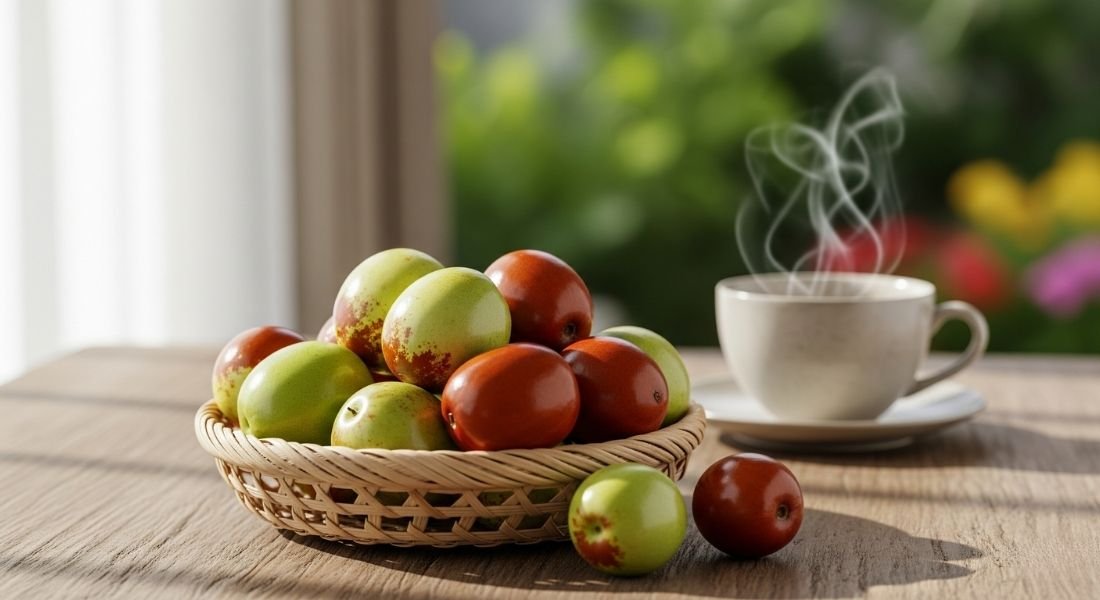If you’ve never heard of žižole (also known as jujube or Chinese date), you’re not alone. This small, apple like fruit has nourished people across Asia and the Mediterranean for thousands of years, but it’s still largely unknown in many parts of the world. That’s changing fast and for good reason.
In this article, you’ll learn what žižole are, how they work, why they’re important for your health and exactly how to add them to your daily life whether you’re a health conscious parent, a home gardener or simply someone curious about natural superfoods.
What Are žižole?

žižole (pronounced zhee-zho-le) are small fruits that grow on the Ziziphus jujuba tree. Originating in China more than 4,000 years ago, this hardy plant has spread across Asia, the Middle East and Mediterranean countries like Italy and Croatia.
Fresh ones look like tiny apples green at first, then turning reddish brown as they ripen. When dried, they resemble dates, both in appearance and taste.
Let’s say you stumble across them at a farmer’s market and bite into a fresh one it’s crisp, sweet, with a texture similar to an apple. Now try the dried version like chewy, slightly caramelized and perfect for snacking or steeping in tea.
Why Are žižole Worth Knowing About?
You might be wondering what makes it stand out from other fruits? Why should you reach for them instead of another apple or banana? Here’s what sets it apart:
They’re Packed with Vitamin C
One small handful of dried ones can provide a significant portion of your daily vitamin C needs. That’s excellent news if you’re looking to strengthen your immune system without supplements.
A Natural Sleep Aid
Traditional Chinese medicine has used it for centuries to promote restful sleep. Modern studies now suggest that its compounds help calm the nervous system without the grogginess of over the counter sleep aids.
Excellent for Digestion
Because they are rich in dietary fiber, they can help regulate digestion, relieve occasional constipation, and support a healthy gut.
Gentle on Blood Sugar
While they are naturally sweet, it have a low glycemic index, making them easier on your blood sugar levels than candies or processed snacks.
Skin Friendly and Antioxidant Rich
Flavonoids and antioxidants in it help protect skin cells from damage caused by free radicals making them a beauty friendly addition to your diet.
How to Use žižole in Everyday Life

Whether you’re new to natural foods or just looking to spice up your daily routine, it can fit seamlessly into your lifestyle in simple, delicious ways.
Practical, Real World Tips and Examples
You don’t need to be a chef or an herbalist to enjoy it.They’re versatile, easy to prepare and work well in sweet and savory dishes. Let’s walk through some simple and realistic ways to enjoy them:
Snacking
Imagine you’re rushing out the door and need a quick snack that isn’t a processed granola bar. Grab a few dried one. They’re chewy, naturally sweet and won’t give you that energy crash later in the day.
Making žižole Tea
At the end of a long, stressful day, you want something calming but not caffeine heavy. Simmer a few dried ones in water for 15–20 minutes. Add ginger or a cinnamon stick for extra warmth. The result? A cozy, slightly sweet tea that can help you wind down.
Boosting a Morning Smoothie
Blending a smoothie with banana, spinach, and almond milk? Toss in a couple of pitted dried ones for a natural energy boost and added fiber.
Cooking in Stews
In Mediterranean households, they are sometimes added to meat stews. The result is a subtle sweet sour contrast that balances rich flavors perfect for lamb or beef dishes.
Creating Homemade Energy Bites
Let’s say you’re a parent looking for healthy snacks for your kids. Blend dried žižole with oats, seeds, and a little honey. Roll into small balls and refrigerate. It’s a fun, no bake recipe that even picky eaters enjoy.
Growing žižole at Home: Easy Steps to Cultivate Your Own Tree

If you have a sunny spot in your yard or even a large container, growing ones can be a rewarding and low maintenance way to enjoy this fruit fresh from your own garden.
If you enjoy gardening, growing your own žižole tree is a rewarding project. Let’s say you live in a warm climate (like Southern California or parts of the Mediterranean). These trees love sunlight and tolerate drought once established. Here’s how to get started:
Step 1: Pick the Right Spot
Choose a location with full sun and well drained soil. Avoid heavy clay soils that stay wet after rain.
Step 2: Planting
You can start from a seed or, more reliably, from a young nursery tree. Dig a hole slightly wider than the root ball and place the tree upright. Water thoroughly after planting.
Step 3: Minimal Maintenance
Once established, these trees require very little care. Water occasionally during dry periods and prune lightly to maintain shape.
Step 4: Harvesting
Expect fruit within 2–3 years. When they start turning brown and wrinkly, they’re ready to eat fresh or dry for later. It’s an ideal tree for sustainable gardens or low maintenance landscaping.
Where žižole Fits into a Healthy Lifestyle

Incorporating it into your daily habits is an easy way to support better nutrition, improve sleep and enjoy natural energy without relying on processed snacks or supplements.
It’s Not Just a Fruit but It’s a Functional Part of Your Routine
Let’s put this into perspective. You’re someone trying to improve your well being. You’ve reduced processed sugar, want better sleep and are searching for nutritious snacks that aren’t boring.
This is where žižole come in, They check all the boxes:
- Naturally sweet but low in sugar
- Rich in nutrients
- Easy to carry and store
- Helpful for stress, digestion and sleep
They’re also a great choice for people looking to diversify their diet with ancient fruits that have stood the test of time. For parents, they are a smart lunchbox item.
For busy professionals, they’re a clean energy boost. For older adults, they support heart and brain health all without extra pills or powders.
Conclusion
žižole may not be as well known as bananas or blueberries, but their benefits are just as real and often more impressive.
Whether you’re sipping it as tea before bed, tossing a few into a salad or growing a tree in your backyard, they offer a healthy, versatile and meaningful addition to your life.
If you have been overlooking this small, ancient fruit, maybe it’s time to give it a second glance.
FAQs
What does žižole taste like?
Fresh žižole have a flavor similar to a mild apple with a hint of pear. When dried, they become chewy and sweet, much like dates or figs.
Can I eat žižole every day?
Yes, žižole can be eaten daily in moderation. Those with sensitive digestion or fiber-related issues should start with small portions.
Where can I buy žižole?
Žižole are available at many international grocery stores, especially those specializing in Asian or Mediterranean foods. Dried varieties are widely sold online.
Are žižole good for weight loss?
Žižole are low in calories and fat but rich in fiber, making them filling and helpful for curbing sugar cravings—a great choice for a balanced diet.
Do žižole help with anxiety or sleep?
Yes. Traditionally, žižole have been valued for their calming effects. Research also suggests they may support relaxation and better sleep quality.
Can I grow žižole in a cold climate?
Žižole trees thrive in warm, sunny climates. In colder regions, they may struggle outdoors, but growing them in containers with winter indoor care is possible.









